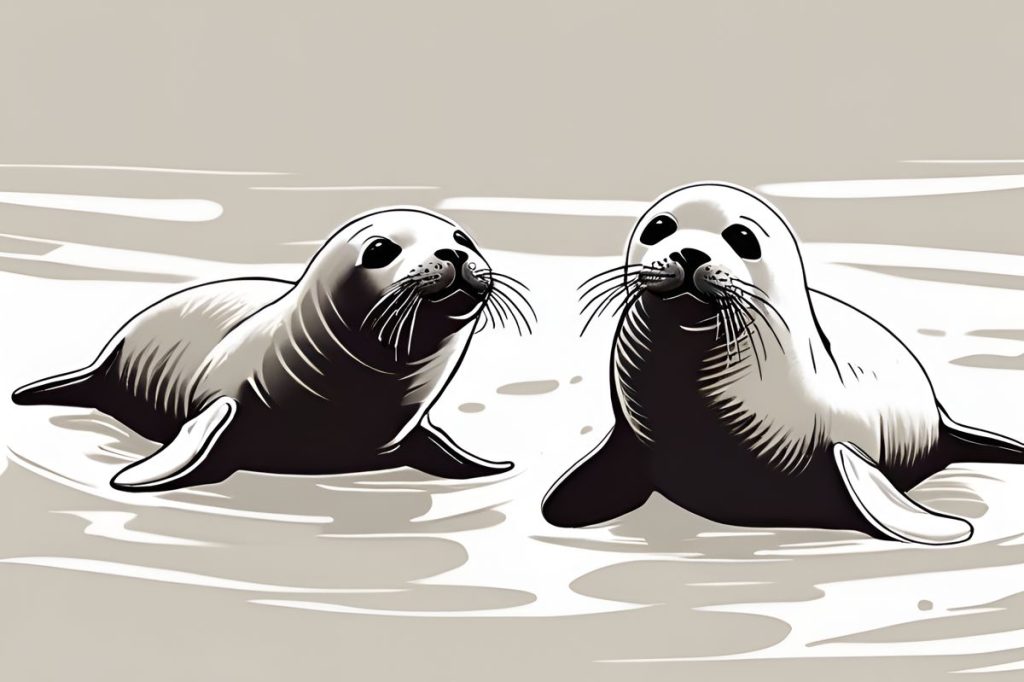The Mediterranean monk seal population in Cyprus is on the rise, with around 22 individuals along the coastline, marking a significant increase from just a decade ago. Two new births have brought hope for the endangered species, despite challenges and the recent loss of one newborn seal in Polis Chrysochous Bay.
What is the current status of the Mediterranean monk seal population in Cyprus?
The Mediterranean monk seal population in Cyprus is showing signs of recovery, with estimates suggesting around 22 individuals currently residing along the island’s coastline. This increase, from a handful a decade ago, highlights the effectiveness of dedicated conservation efforts and protective measures, despite challenges and the recent loss of a newborn seal.
A Rare Marine Phenomenon
The Mediterranean monk seal, one of the rarest marine mammals in the world, continues to defy the odds with a growing presence in Cyprus. This endangered species has witnessed two new additions to its numbers in the latest breeding season. Researchers have kept a watchful eye on these marine treasures, often found along the secluded shores of the island. While the loss of one of the newborn seals in Polis Chrysochous Bay is a tragic setback, the survival of the other, named Pieros, sparks hope for the future of this species.
Autopsies are conducted to unravel the mysteries behind the untimely deaths that sometimes occur, with the aim of improving conservation strategies. The Mediterranean monk seal faces its greatest challenges in the first year, making each successful birth a critical step towards the species’ recovery. The two latest seals, welcomed into the world in the serene environments of Akrotiri and Akamas/Halabro, signify the potential for a brighter future. Arcadia and Pieros, though faced with different fates, emphasize the urgent need for continuous protection and study.
The Struggle for Survival
Once believed to be almost extinct in Cypriot waters, the Mediterranean monk seal’s population has seen an encouraging resurgence. From a mere handful of individuals a decade ago, it has now more than doubled, with current estimates suggesting around 22 seals call the island’s coastline home. This increase is a testament to the dedicated efforts of conservation programmes, though much work remains to ensure their survival.
These elusive creatures have an affinity for the insular sea caves that dot the coastal landscape, which serve as critical birthing and nurturing environments for the seals. Thanks to diligent mapping by researchers, 17 such shelters have been identified, ensuring that these habitats are monitored and protected. Around-the-clock surveillance, including CCTV in some locations, helps safeguard the vulnerable pups during their first, precarious months.
Human Impact and Conservation Efforts
Human activities pose a significant threat to the tranquility required for seal pups to thrive. To mitigate these threats, authorities have implemented measures to foster safer breeding conditions. Protective decrees have established zones around key sea caves where activities such as fishing and motor boating are strictly prohibited, shielding the seals from disruptive human interference.
In a particularly proactive move, the restoration of a collapsed sea cave along the Limassol coast has already yielded positive results, with a small group of seals adopting the refurbished sanctuary. This success story demonstrates the impact of targeted conservation initiatives and the potential for human-induced damage to be reversed.
Monitoring and Future Prospects
The seal monitoring group remains vigilant in their observations, regularly documenting the presence of these aquatic mammals across various locales. The most frequent sightings occur in places like Ayia Napa sea caves, Governor’s Beach, and Akrotiri, among others. These observations are crucial for understanding seal behavior and ensuring the continuation of their species.
As these gentle marine denizens navigate the waters of Cyprus, each sighting, each birth, adds a precious strand to the web of life they are part of. The newborn seals not only signify hope but also embody the responsibility we share in preserving the natural world. With continued vigilance and care, the Mediterranean monk seal can hope to flourish once again in its ancient, azure home.
What is the current status of the Mediterranean monk seal population in Cyprus?
The Mediterranean monk seal population in Cyprus is showing signs of recovery, with estimates suggesting around 22 individuals currently residing along the island’s coastline. This increase, from a handful a decade ago, highlights the effectiveness of dedicated conservation efforts and protective measures, despite challenges and the recent loss of a newborn seal.
Why are sea caves important for the Mediterranean monk seal population in Cyprus?
Sea caves serve as critical birthing and nurturing environments for the Mediterranean monk seal population in Cyprus. These insular caves provide a safe haven for seal pups during their first, precarious months. Researchers have identified and monitored 17 such shelters to protect the vulnerable pups and ensure their survival.
How do human activities impact the Mediterranean monk seal population in Cyprus?
Human activities, such as fishing and motor boating, pose a significant threat to the tranquility required for seal pups to thrive along the coastline of Cyprus. To mitigate these threats, protective decrees have established zones around key sea caves where disruptive activities are strictly prohibited, safeguarding the seals from human interference.
What conservation efforts are being made to protect the Mediterranean monk seal population in Cyprus?
Authorities in Cyprus have implemented various conservation measures to protect the Mediterranean monk seal population. These efforts include establishing protected zones around sea caves, conducting autopsies to understand causes of seal deaths, monitoring the seals through surveillance cameras, and restoring collapsed sea caves to create new sanctuaries for the seals. These initiatives aim to ensure the survival and recovery of this endangered species.

